| Topic: DRAGONS UNICORNS MERMAIDS PEGASUS OTHER MYTHIC ANIMALS | |
|---|---|
   But it dosen't have anything to do with the recipe thread, this is totally a different topic But it dosen't have anything to do with the recipe thread, this is totally a different topic
Oh well I like this kind of stuff. Be happy others post but I'm having fun.   
I'll start posting recipes on cooking Hobbits.    or how to filet a mermaid, part fish, that was bad or how to filet a mermaid, part fish, that was bad now the Banshee, she really needs a makeover now the Banshee, she really needs a makeover Are there any thing about the boogeyman, and hugs back at you. Are there any thing about the boogeyman, and hugs back at you.  
|
|
|
|
|
|
That is funny indeed Bunny Christine.
                 
|
|
|
|
|
|
Edited by
tazzops
on
Sun 07/17/11 01:01 PM
|
|

Aside from their frequent appearances on ancient frescoes, statuary and artwork, such fanciful creatures of mythology don't have a clear origin, although some have linked the mermaid to lonely sailors who glimpsed dugongs (also known as sea cows) in the distance and made a giant leap. But a recent discovery in an Iranian salt mine, one scholar suggests, may shed light on the origins of a famous satyr of antiquity, one so well known that it merited a visit from the emperor himself. The satyr is a goat-man in Greek legend who dances and frolics, playing pipes and chasing nymphs all day, living in a woodsy version of the Playboy Mansion. In June, a man's body, naturally mummified within an ancient salt mine, was found outside the Iranian city of Zanjan. Six such discoveries have been made since 1993, according to the Circle of Ancient Iranian Studies foundation based in London. Earlier salt man finds go back as far as 540 B.C., around the time of the ancient Achaemenid dynasty. Archaeologists treasure natural mummy discoveries — such as "Otzi," the ice-entombed man preserved in an Alpine glacier and uncovered in 1991 — because preservation of soft tissues, even beards in the case of the salt men, allows for DNA analysis and other tools of forensic science. Stanford University's Adrienne Mayor, a folklorist, specializes in analyzing how fossil discoveries in prehistory may have contributed to legends such as the Titans of Greek mythology (botched reconstructions of mammoth bones) or mystic water serpents in Native American legends (fossilized fish-tailed crocodiles preserved in desert rock deposits). As far back as the era of the great Roman emperor Constantine, who reigned from 312 to 337, cities had their own special attractions, Mayor explains. The early Christian writer St. Jerome (the patron saint of librarians in the Roman Catholic Church, who died in the year 420) recounted that Constantine made a special trip from Constantinople (Istanbul today) to Antioch, once a great city of his empire, to view an exhibit of a "satyr" that had been extremely well-preserved in salt. In an earlier book, The First Fossil Hunters: Paleontology in Greek and Roman Times, Mayor suggested that the "satyr" was likely a fake, the patched-together bodies of a man and goat. But now she thinks the recently discovered salt man might provide another explanation. "Obviously, satyrs are mythic creatures," Mayor says. But the head of the man preserved in salt since about 540-300 B.C. "bears a striking resemblance to ancient Greek and Roman depictions of satyrs," she says, which are shown to have similar hair and beard, a snub nose and protruding jaw. "I think it's very likely that an ancient discovery of a similarly preserved 'salt man' in northwestern Iran is the basis for St. Jerome's account of the 'satyr' preserved in salt and examined by the Emperor Constantine and numerous other curious visitors in Antioch," Mayor concludes. Expert opinions are mixed. Roman historian Andrew Merrills of England's University of Leicester, says in an e-mail: "Overall, it sounds like a great big 'maybe' to me. Interesting story, fabulous idea, but I wouldn't want to build too much of an argument on it." But archaeologist Bruce Hitchner at Tufts University in Massachusetts calls the idea credible. The 540 B.C. salt man from Iran most resembles an elderly satyr figure commonly seen in Greek art, called Silenus, says Mayor. Silenus was usually depicted with long golden hair, a beard, a bulging forehead, a snub nose and an open mouth. Mayor suspects the early images of satyrs may have sprung from such discoveries, transformed into art (with the addition of a goat's body) in stories traded by travelers of the ancient world. "When I saw the picture of the salt man, I was just struck by how much like a satyr he looks," Mayor says. "Satyr plays were very popular in antiquity, so everyone knew what satyrs looked like. There's no reason to think people back then wouldn't have made the same connection."much like a satyr he looks," Mayor says. "Satyr plays were very popular in antiquity, so everyone knew what satyrs looked like. There's no reason to think people back then wouldn't have made the same connection." 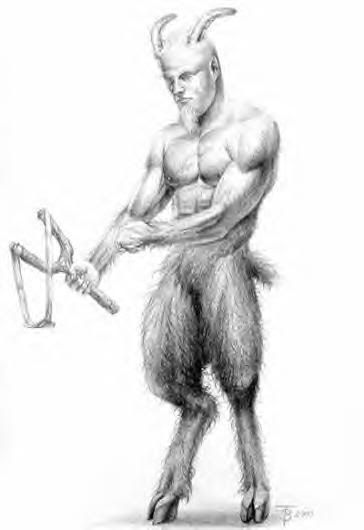
|
|
|
|
|
|
Edited by
tazzops
on
Sun 07/17/11 01:06 PM
|
|
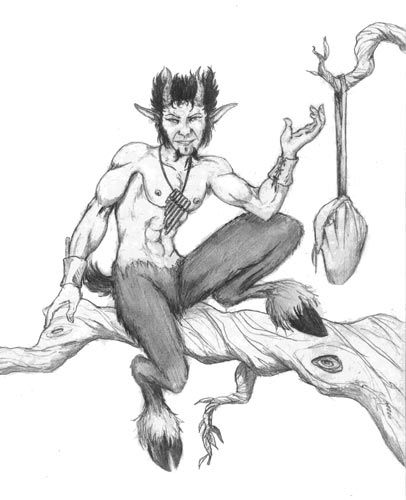
PAN was the god of shepherds and flocks, of mountain wilds, hunting and rustic music. He wandered the hills and mountains of Arkadia playing his pan-pipes and chasing Nymphs. His unseen presence aroused feelings of panic in men passing through the remote, lonely places of the wilds. The god was a lover of nymphs, who commonly fled from his advances. Syrinx ran and was transformed into a clump of reeds, out of which the god crafted his famous pan-pipes. Pitys escaped and was turned into a mountain fir, the god's sacred tree. Ekho spurned his advances and fading away left behind only her voice to repeat forever the mountain cries of the god. Pan was depicted as a man with the horns, legs and tail of a goat, and with thick beard, snub nose and pointed ears. He was often appears in the retinue of Dionysos alongside the other rustic gods. Greeks in the classical age associated his name with the word pan meaning "all". However, it true origin lies in an old Arkadian word for rustic. Pan was frequently identified with other similar rustic gods such as Aristaios, the shepherd-god of northern Greece, who like Pan was titled both Agreus (the hunter) and Nomios (the shepherd); as well as with the pipe-playing Phrygian satyr Marsyas; and Aigipan, the goat-fish god of the constellation Capricorn. Sometimes Pan was multiplied into a host of Panes, or a triad named Agreus, Nomios, and Phorbas. 
|
|
|
|
|
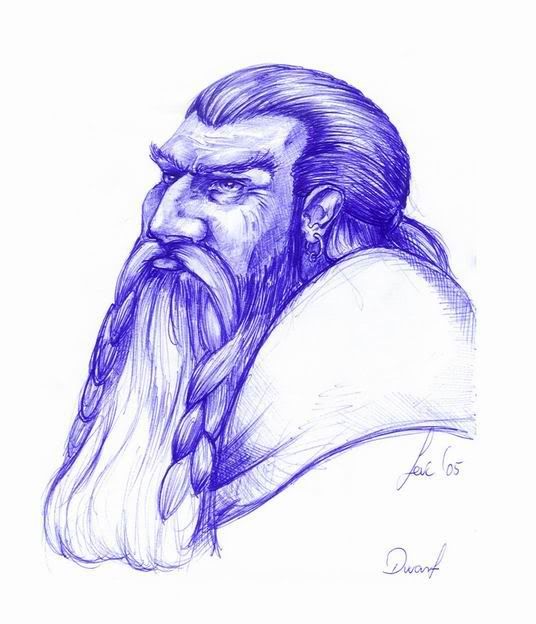
A Dwarf is a magical creature that is associated with age and wisdom. Their pictures almost always are with beards. They have great knowledge, particularly of craftsmanship. Metallurgy is one of their great skills. They are said to have made some of the great artifacts of legend. The original concept of dwarves is very hard to get a clear picture of. The sources closest to the original Germanic mythology come from Norse Mythology, but even these are scarce and very varied. Sources have gradually given dwarves more comical and superstitious roles. Dwarves were certainly humanoid, but sources differ over their height, their lifestyles, and their similarity to elves. Considering early sources, and considering the dwarves' nature, original dwarves seem fully human height. They had become unseen magical creatures like fairies; users of charms, curses, and deceit. This trend is partly explained by their smaller place in common beliefs: God and Christianity were the main focuses of worship Late Norse concepts of dwarves were becoming quite different from the early ones. Elves are a race with very close associations to dwarves. 'Alf' is often part of their name. (eg.: Álfr, Gandálfr, and Vindálfr) The more modern image is short in height and somewhat ugly. The remnants of the original dwarf formed later fairy tales and folklore (see English folklore, German folklore, and Dutch folklore). Dwarves are generally described as being about 3 to 4 feet tall, big-headed, and bearded. Some dwarves of mythology and fairy tales include: Rumpelstiltskin, the dwarves from Snow White, Dvalin, Lit, Fjalar and Galar, Alvis, Eitri, Brokkr, Hreidmar, Alfrik, Berling, Grer, Fafnir, Otr, Regin (rarely given as Mimir), Andvari (or Alberich). They had strong associations with death[2][3]: palid skin; dark hair; connections with the earth; their role in mythology. They followed animistic traditions, showing similarities to such concepts of the dead. They were similar to others from the 'Vættir' family, such as elves.[4] As their mythology evolved, the most notable changes have had them become more comical and more mysterious. They adopted the modern image of short height and ugliness. Their associations with the underground became more predominant.. Trolls are deathly creatures who rise from beneath the earth and often require to be put back to rest. Nisse have the same laborer image as dwarves, and they lived in burial mounds. Death is a recurring motif in Norse Mythology, and ancestor worship is a prevalent practice. All of this suggests dwarves were a form of spirits of the dead. Short dwarves only appeared around the 13th century, in sources such as the legendary saga, and it became a trend for mythical creatures (see: fairies; elves; gnomes) to be small, such that they gained a mischievous and comical nature. Tolkien's dwarves Traditionally, the plural was "dwarfs", especially when referring to actual humans with dwarfism, but ever since J. R. R. Tolkien used dwarves in his fantasy novel The Hobbit, the subsequent The Lord of the Rings (often published in three volumes), and the posthumously published The Silmarillion, the plural forms "dwarfs" has been replaced by "dwarves". Dwarves in Tolkien are long-lived, living nearly four times the age of man (about 250 years), but are not prolific breeders, having children rarely and spaced far apart, and having few women among them. Dwarvish children are cherished by their parents, and are defended at all costs from their traditional enemies, such as Orcs. A longstanding enmity between Dwarves and Elves is also a staple of the racial conception. Female dwarves A long standing source of interest (and humour) comes from the allusion of Tolkien to female dwarves having beards. In addition they are rare creatures. A more cynical, and perhaps more realistic reason for this is that female dwarves (unlike, say, female humans or elves) lack sex appeal and consequently have little mention in folklore.. |
|
|
|
|
|
Edited by
tazzops
on
Sun 07/17/11 01:31 PM
|
|
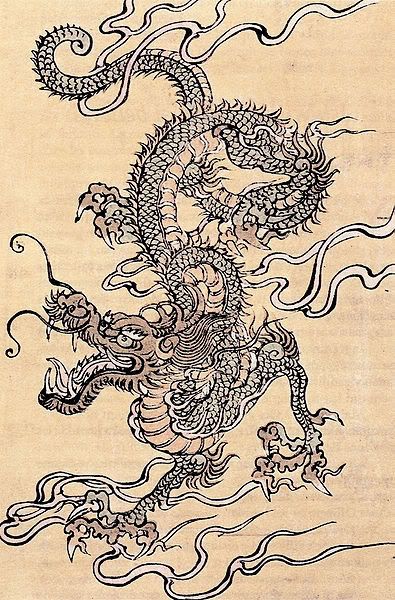
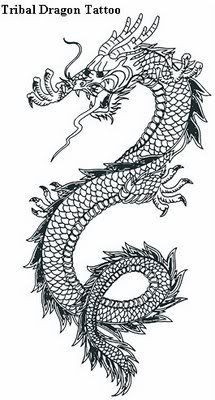
Japanese Dragons Japanese dragons are diverse legendary creatures in Japanese mythology and folklore. Native dragon myths and legends have many imported stories about dragons from China, Korea and India. Like these other Asian dragons, most Japanese ones are water deities associated with rainfall and bodies of water, and are typically depicted as large snakelike creatures that are wingless with clawed feet. Physical descriptions of Japanese dragons are similar to the Chinese and Korean dragons except for some slight differences. The Japanese dragons have three claws instead of four and they do not always have wings. For the most part these creatures are thought to be kind and the bringer of good fortune. An exception to this, comes from a Japanese legend that tells of a dragon king that has scales and a flicking tongue. He was very destructive and brought chaos wherever he went. He would invade villages and devour innocent children. He was held in check by the goddess of love, Benten. She charmed him with words of love. She said that she would marry him and be with him always if he would promise to end his wrath against mankind. On the Pacific coast of Japan a great temple was built at Kamakura to celebrate the occasion of Benten saving the area from his wrath. These dragons like all Asian dragons and unlike the mythical dragons found in European dragon tales are not evil. The medieval dragons from European folklore are destructive mythical creatures that kill, steal gold and gems and horde these into great treasures. The dragon images in Japan are considered to be bringers of wealth and good fortune. According to legends they are believed to be capable of taking the shape of humans and is may even be capable of mating with humans. The age-old enemy of the dragon is the phoenix and sometimes a bird-man creature called Karura. Shinto, a traditional Japanese religion, , tells of a kingdom of serpent people under the sea. This kingdom is ruled by the Dragon King, Ryu-wo. He lives in a spectacular palace of crystal and coral. The legend states that he has a human body, and a serpent entwined in his crown. Known for his nobility and wisdom, Ryu-wo was a guardian of the Shinto faith. People who have fallen into the sea are said to have lived on in the kingdom of Ryu-wo.mating with humans. The age-old enemy of the dragon is the phoenix and sometimes a bird-man creature called Karura. Shinto, a traditional Japanese religion, , tells of a kingdom of serpent people under the sea. This kingdom is ruled by the Dragon King, Ryu-wo. He lives in a spectacular palace of crystal and coral. The legend states that he has a human body, and a serpent entwined in his crown. Known for his nobility and wisdom, Ryu-wo was a guardian of the Shinto faith. People who have fallen into the sea are said to have lived on in the kingdom of Ryu-wo. 
|
|
|
|
|
|
Edited by
tazzops
on
Sun 07/17/11 01:41 PM
|
|

Fairies Pixies, Pretty Little Creatures The belief in the existence of Fairies Pixies was first known and is based on the fae of medieval Western European folklore. They are often identified with a variety of beings from other mythologies. These fairies pixies, along with Elves, Mermaids, Dragons, Dwarves, Leprechauns and many other creatures in folklore, are supernatural beings endowed with the powers of magic and enchantment. Here we are going to discuss these faeries pixies. Do fantasy creatures exist? PROOF More About Creature History Want To See Some Fantasy Creature Art More about these Fantasy Creatures The Tooth Fairy is a very good fairy that interacts with us humans. Is the Tooth Fairy Real? Ask any child as he wakes up and finds a present under his pillow in exchange for a baby tooth.Click here for more about the Tooth Fairy. Literature from all over the world has tales of their relations with humans. Belief in these mythological creatures seems to reach back into ancient times, being traceable both in written and oral tradition. Traces stem from the Sanskrit gandharva (semi divine celestial musicians) to the nymphs of the Greeks and Homer, the jinni of Arabic mythology, and other folk characters of the Samoans, Arctic, and other indigenous Americans. Today, the depictions, especially in children's fairytales, rest largely upon the old folklore tradition. Here they were generally described as serious and sinister. There are some exceptions that include the "Tooth Fairy", the Godmother in "Cinderella" and "Snow White and The Seven Dwarfs". Folklore about these mystical creatures is particularly prevalent in Ireland, Cornwall, Wales, and Scotland. In English folklore they are sometimes known as Pixies or spirits. They are commonly represented as mischievous imps who delights in flustering young maidens and leading travelers astray. It appears that their women, all over Ireland, find birth a difficult experience. Many children die before birth and those that do survive are often stunted or deformed creatures. The adult faeries, who are aesthetic beings, are repelled by these infants and have no wish to keep them. They will try to swap them with healthy children who they steal from the mortal world. The wizened, ill tempered creature left in place of the human child is known as a changeling and possesses only the power to work. Much of the folklore from this time revolves around protection from malice. In particular, folklore describes how to prevent these creatures from abducting older people or stealing babies and substituting changelings for the babies. Humans, to avoid these fantasy creatures, use such means as cold iron (they don't like iron and will not go near it) or charms made of rowan and herbs, or they totally avoid these fantasy creatures by staying out of locations known to be frequented by these little pixies. 
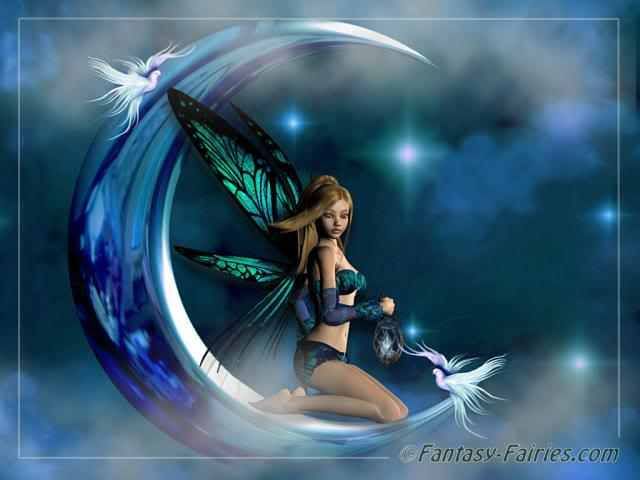
|
|
|
|
|

|
|
|
|
|
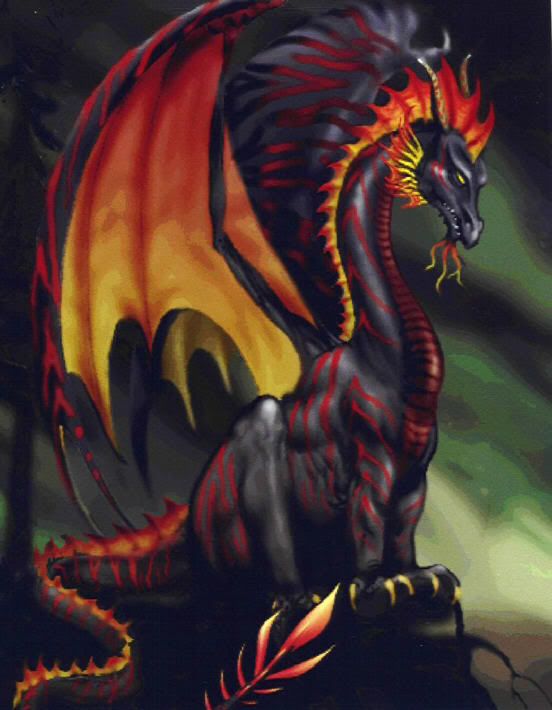
|
|
|
|
|
|
Edited by
tazzops
on
Sun 07/17/11 02:52 PM
|
|

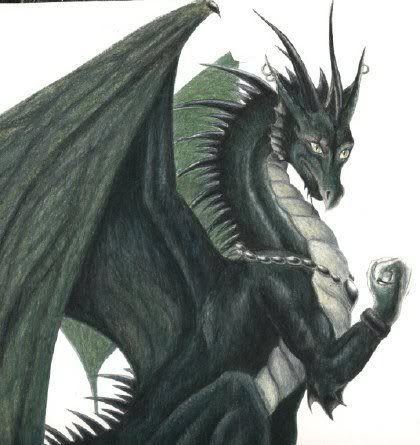
|
|
|
|
|
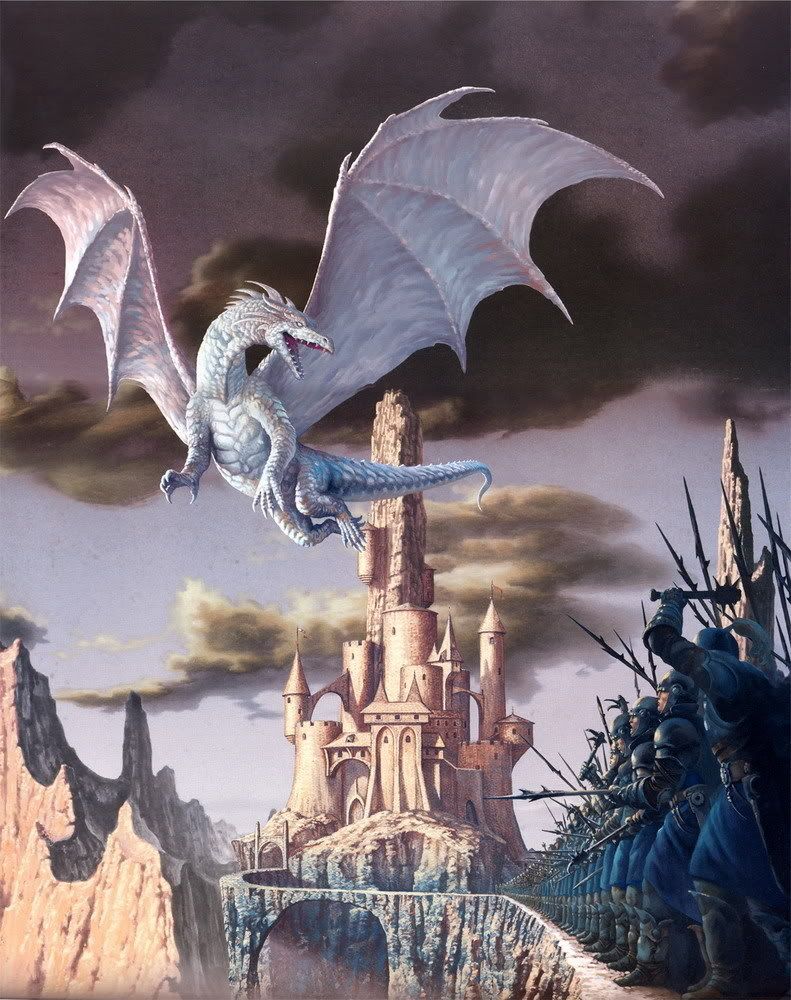
|
|
|
|
|
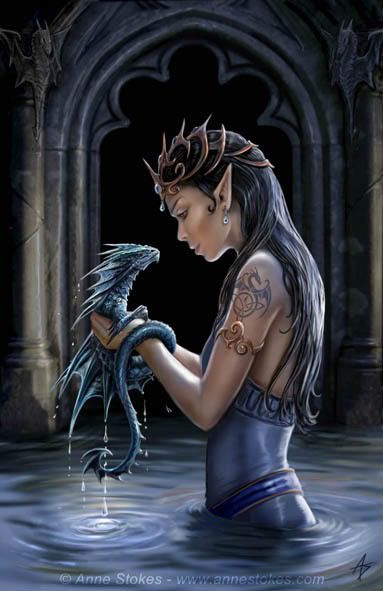
|
|
|
|
|

This reminds me of someone I used to know, wimpy   my bad. my bad.
|
|
|
|
|
|
I think it does indeed look very grand. It would be wonderful indeed to have a pair of dragons and sell the Babies at the local swapmeet or flea market.
  
|
|
|
|
|

Fairies Pixies, Pretty Little Creatures The belief in the existence of Fairies Pixies was first known and is based on the fae of medieval Western European folklore. They are often identified with a variety of beings from other mythologies. These fairies pixies, along with Elves, Mermaids, Dragons, Dwarves, Leprechauns and many other creatures in folklore, are supernatural beings endowed with the powers of magic and enchantment. Here we are going to discuss these faeries pixies. Do fantasy creatures exist? PROOF More About Creature History Want To See Some Fantasy Creature Art More about these Fantasy Creatures The Tooth Fairy is a very good fairy that interacts with us humans. Is the Tooth Fairy Real? Ask any child as he wakes up and finds a present under his pillow in exchange for a baby tooth.Click here for more about the Tooth Fairy. Literature from all over the world has tales of their relations with humans. Belief in these mythological creatures seems to reach back into ancient times, being traceable both in written and oral tradition. Traces stem from the Sanskrit gandharva (semi divine celestial musicians) to the nymphs of the Greeks and Homer, the jinni of Arabic mythology, and other folk characters of the Samoans, Arctic, and other indigenous Americans. Today, the depictions, especially in children's fairytales, rest largely upon the old folklore tradition. Here they were generally described as serious and sinister. There are some exceptions that include the "Tooth Fairy", the Godmother in "Cinderella" and "Snow White and The Seven Dwarfs". Folklore about these mystical creatures is particularly prevalent in Ireland, Cornwall, Wales, and Scotland. In English folklore they are sometimes known as Pixies or spirits. They are commonly represented as mischievous imps who delights in flustering young maidens and leading travelers astray. It appears that their women, all over Ireland, find birth a difficult experience. Many children die before birth and those that do survive are often stunted or deformed creatures. The adult faeries, who are aesthetic beings, are repelled by these infants and have no wish to keep them. They will try to swap them with healthy children who they steal from the mortal world. The wizened, ill tempered creature left in place of the human child is known as a changeling and possesses only the power to work. Much of the folklore from this time revolves around protection from malice. In particular, folklore describes how to prevent these creatures from abducting older people or stealing babies and substituting changelings for the babies. Humans, to avoid these fantasy creatures, use such means as cold iron (they don't like iron and will not go near it) or charms made of rowan and herbs, or they totally avoid these fantasy creatures by staying out of locations known to be frequented by these little pixies. 

   
|
|
|
|
|
|
I do indeed like those graphics.
 
|
|
|
|
|

I love these pictures, and this one is precious. |
|
|
|
|

I love these pictures, and this one is precious. I really like that one. Wanted a pet dragon. |
|
|
|
|
|
I think the closest to having a pet dragon is an Ighuana not sure if thats spelled right, gosh that makes me think that the little lizards that we have would be descendants from the dragons.

|
|
|
|
|
|
I think the closest to having a pet dragon is an Ighuana not sure if thats spelled right, gosh that makes me think that the little lizards that we have would be descendants from the dragons. 
Had one when I was 12 had till I went into the military then no one would take care of it. So I had to find it a new home. |
|
|
|
|







